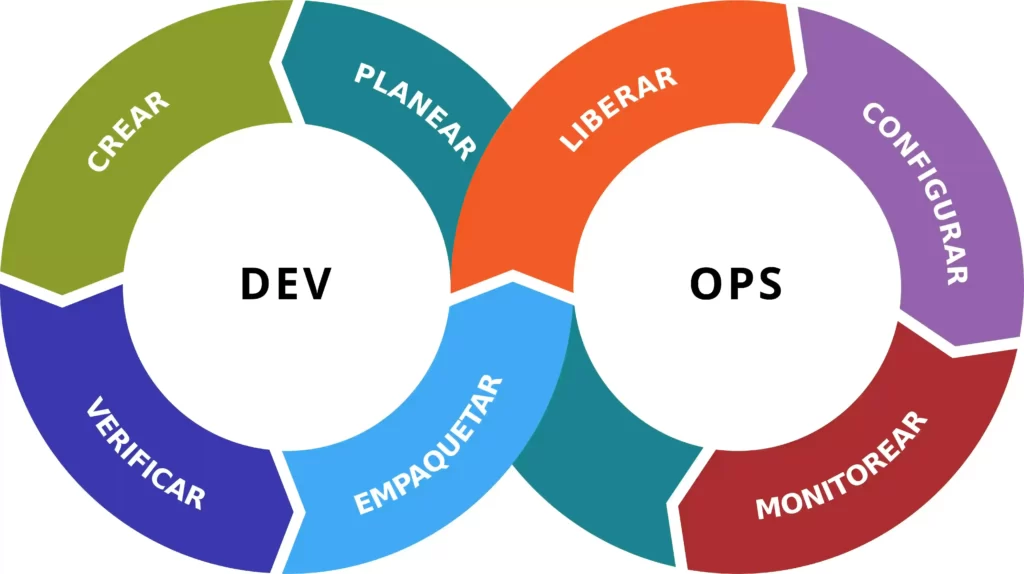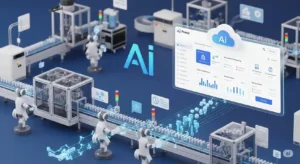The Evolution of DevOps
DevOps, a portmanteau of Development and Operations, has emerged as a transformative approach in the software development lifecycle. It revolves around collaboration, communication, and integration between development teams and operations teams, aiming for continuous delivery and improvement. In this article, we delve into the intricacies of DevOps, exploring its evolution, core principles, benefits, agile solutions, best practices, challenges, and the future landscape.
Historical Perspective
DevOps didn’t emerge overnight. Understanding its evolution requires a journey through its historical roots, tracing the steps from traditional development and operations silos to the integrated approach we know today.
Key Milestones in DevOps Development
Several key milestones have marked the evolution of DevOps, from the introduction of version control systems to the rise of cloud computing. Each milestone has contributed to shaping DevOps into what it is today.
Unlocking Efficiency with DevOps Best Practices
Discover the transformative power of DevOps best practices in unlocking unparalleled efficiency. From continuous integration to infrastructure as code, these methodologies streamline workflows, reduce bottlenecks, and elevate software development efficiency to new heights. Explore the synergy of these practices for a faster, more collaborative, and error-free development process.
Core Principles of DevOps
Collaboration between Development and Operations
At the heart of DevOps lies collaboration. Breaking down silos between development and operations teams fosters communication and shared responsibility, ensuring a smoother and more efficient workflow.
Continuous Integration and Continuous Deployment (CI/CD)
The principles of CI/CD involve automating the building, testing, and deployment of code changes. This leads to faster and more reliable software releases, a crucial aspect in today’s fast-paced digital landscape.
Automation in DevOps
Automation is a linchpin in DevOps practices. Whether it’s automating repetitive tasks or streamlining complex workflows, automation accelerates processes and minimizes errors.
Benefits of DevOps Implementation
Increased Efficiency and Productivity
DevOps practices eliminate bottlenecks, reducing manual interventions and accelerating the software development lifecycle. This results in enhanced efficiency and overall productivity gains.
Faster Time to Market
By enabling continuous delivery, DevOps shortens the time from development to deployment. This agility is crucial in meeting customer demands and staying competitive in dynamic markets.
Improved Collaboration and Communication
Silos are dismantled through improved collaboration and communication. DevOps fosters a culture of shared responsibility, where teams work together seamlessly toward common goals.
Agile Solutions in DevOps
Agile Methodologies in Software Development
Agile methodologies, with their focus on flexibility and adaptability, complement DevOps practices seamlessly. The combination empowers teams to respond quickly to changing requirements and deliver value continuously.
Integration of Agile Principles in DevOps Practices
DevOps incorporates agile principles, emphasizing iterative development, customer feedback, and collaboration. This integration ensures that software development aligns with business objectives.
Best Practices in DevOps
Infrastructure as Code (IaC)
IaC treats infrastructure configurations as code, enabling automation and version control. This practice ensures consistency across environments and simplifies the management of infrastructure.
Monitoring and Logging
Effective monitoring and logging are crucial for identifying issues promptly. DevOps relies on robust monitoring tools to provide real-time insights into application performance and system behavior.
Security in DevOps
Security is integral to the DevOps lifecycle. Implementing security measures throughout the development process ensures that applications are robust and resistant to cyber threats.
Challenges and Solutions in DevOps Adoption
Common Challenges Faced by Organizations
DevOps adoption comes with its share of challenges, including resistance to change, tool integration issues, and cultural barriers. Identifying and addressing these challenges is pivotal for successful implementation.
Strategies to Overcome DevOps Adoption Challenges
Organizations can navigate challenges by fostering a culture of continuous learning, providing adequate training, and gradually introducing DevOps practices. A phased approach helps teams adapt to the new way of working.
Future Trends in DevOps
Emerging Technologies Impacting DevOps
Technological advancements continue to shape DevOps. From AI and machine learning to edge computing, exploring the impact of emerging technologies helps organizations stay ahead of the curve.
Predictions for the Future of DevOps
Experts predict a continued evolution of DevOps, with a focus on increased automation, improved collaboration tools, and enhanced security measures. Understanding these trends is vital for organizations preparing for the future.
Cultivating a DevOps Culture
Importance of a Cultural Shift
DevOps is not just a set of practices; it’s a cultural shift. Embracing a DevOps mindset involves a fundamental change in how teams perceive and approach their work.
Strategies for Fostering a DevOps Mindset
Leadership plays a pivotal role in fostering a DevOps culture. Encouraging open communication, rewarding collaboration, and providing continuous learning opportunities contribute to a successful cultural transformation.
Measuring DevOps Success
Key Performance Indicators (KPIs) in DevOps
Measuring success in DevOps requires tracking key performance indicators. Metrics like deployment frequency, lead time, and change failure rate offer insights into the effectiveness of DevOps practices.
Continuous Improvement in DevOps Practices
DevOps is a journey, not a destination. Continuous improvement involves regularly assessing processes, identifying areas for enhancement, and implementing changes to achieve higher efficiency and effectiveness.
Scaling DevOps Across Organizations
Challenges of Scaling DevOps
Scaling DevOps across large organizations poses unique challenges. Coordinating efforts, ensuring consistency, and managing cultural shifts become more complex but are essential for widespread success.
Strategies for Successful Scaling
Implementing DevOps at scale demands a strategic approach. Organizations must invest in robust training programs, establish clear communication channels, and adapt practices to suit the scale of operations.
DevOps Tools Landscape
Overview of Popular DevOps Tools
The DevOps tools landscape is vast and varied. From version control systems to continuous integration servers, understanding the functionalities of popular tools aids in making informed choices for specific needs.
Choosing the Right Tools for Specific Needs
Selecting the right tools is crucial for effective DevOps implementation. Considering factors such as team size, project complexity, and integration requirements ensures that tools align with organizational goals.
Collaboration Between DevOps and Other Teams
Integration with QA and Testing Teams
DevOps is not limited to development and operations; it extends to collaboration with QA and testing teams. Ensuring seamless integration enhances the overall quality of software releases.
Cross-Functional Collaboration for Holistic Solutions
Collaboration goes beyond individual teams. DevOps encourages cross-functional collaboration, bringing together various stakeholders to contribute to holistic solutions and deliver superior outcomes.
Conclusion
In conclusion, DevOps stands as a powerful force in reshaping how organizations approach software development and operations. Its impact on efficiency, collaboration, and continuous improvement is undeniable. As we navigate the future, embracing the cultural shift and staying abreast of emerging trends will be key to sustaining success in the dynamic landscape of DevOps.
Lastly, if you’re seeking a trusted partner in the realm of IoT solutions, look no further than Trident Information Systems. As a distinguished Gold Microsoft Partner, LS Central Diamond Partner, and an IBM Gold Partner, we have a proven track record of successfully serving diverse and thriving businesses. Our commitment extends to the seamless integration of DevOps practices, ensuring the highest efficiency in your software development lifecycle. Feel free to reach out to us with any inquiries! Stay abreast of the latest trends and advancements in IoT and DevOps by following our LinkedIn page.
FAQs
- What is the primary goal of DevOps?
- DevOps aims to enhance collaboration and communication between development and operations teams, enabling continuous delivery and improvement.
- How does DevOps contribute to faster time to market?
- DevOps achieves faster time to market by automating processes, ensuring continuous integration and deployment, and breaking down silos between teams.
- What are the key challenges in adopting DevOps?
- Common challenges include resistance to change, tool integration issues, and cultural barriers. Overcoming these challenges requires strategic planning and gradual implementation.
- Which KPIs are crucial for measuring DevOps success?
- Key performance indicators such as deployment frequency, lead time, and change failure rate provide insights into the effectiveness of DevOps practices.
- How can organizations scale DevOps successfully?
- Successful scaling involves strategic planning, robust training programs, and clear communication channels to ensure consistency and alignment with organizational goals.







